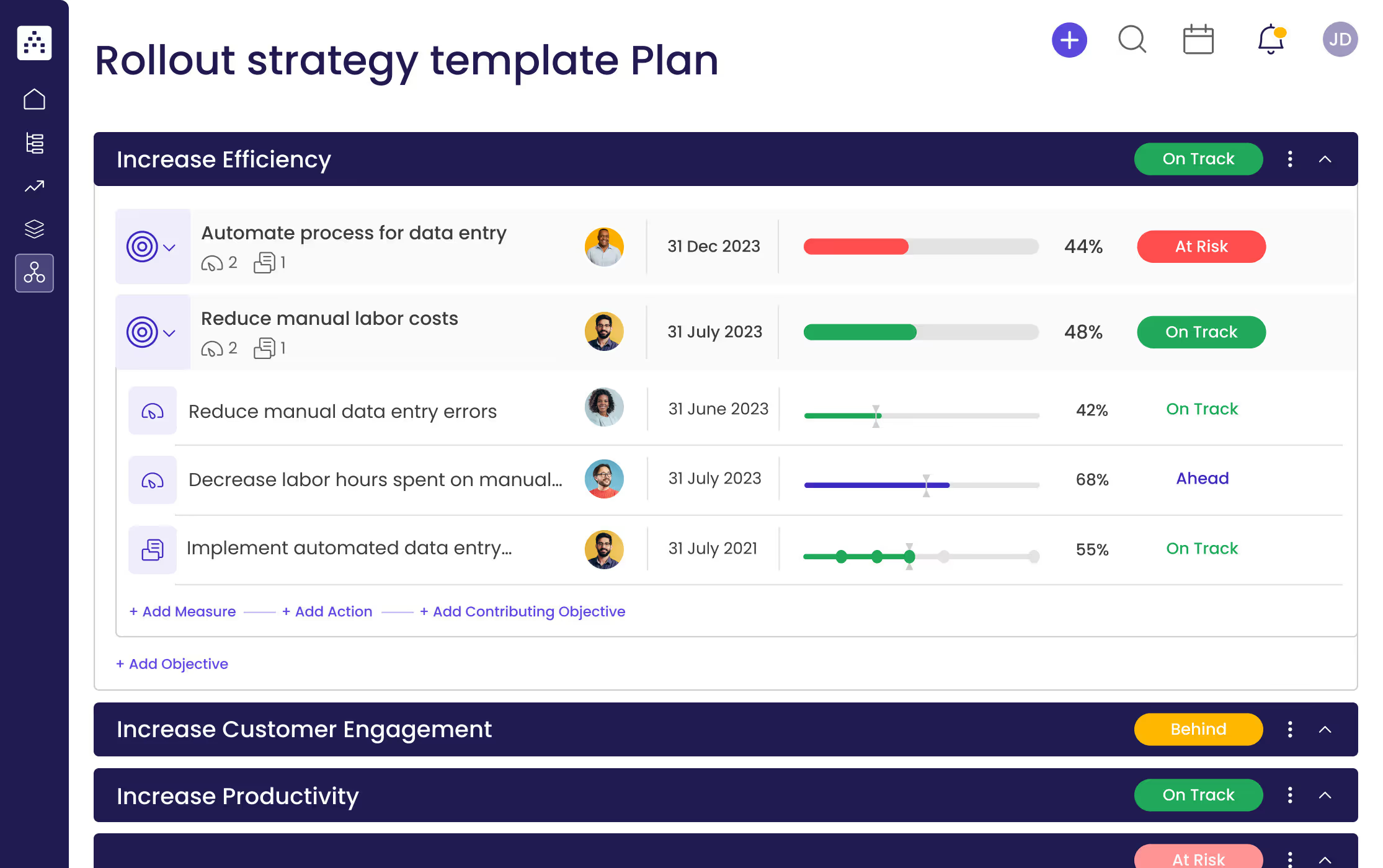What is a Rollout Strategy Plan?
A rollout strategy plan is a comprehensive plan that outlines the steps and actions required to successfully launch and implement a new product, service, or initiative. The plan includes a detailed roadmap for executing the rollout, including timelines, resources, and contingencies, and ensures that the rollout is aligned with the organization's overall goals and objectives.
What's included in this Rollout Strategy Template?
- 3 focus areas
- 6 objectives
- 6 projects
- 6 KPIs
Each focus area has its own objectives, projects, and KPIs to ensure that the strategy is comprehensive and effective.
Who is the Rollout Strategy Template for?
The rollout strategy template is designed to meet the needs of any size team or industry. Whether you’re planning a corporate-wide transformation or a small departmental project, the template can help you get organized and ensure that all the pieces of your project are accounted for. With the template, you can easily identify focus areas and objectives, set measurable targets, and implement related projects to achieve your goals.
1. Define clear examples of your focus areas
Focus areas are the overarching goals that you want to achieve with your strategy. When defining your focus areas, think about the big picture and the overall outcome you want to achieve.
Examples of strategic focus areas that could fall under a Rollout strategy template could be: Increase Efficiency, Increase Customer Engagement, and Increase Productivity.
2. Think about the objectives that could fall under that focus area
Objectives are the specific goals you want to achieve within each focus area. Your objectives should be SMART (specific, measurable, achievable, relevant, and time-bound) so that you can track your progress. When setting objectives, think about what you need to do in order to achieve your focus area’s goals.
Examples of some objectives for the focus area of Increase Efficiency could be: Automate process for data entry, and Reduce manual labor costs.
3. Set measurable targets (KPIs) to tackle the objective
Key Performance Indicators (KPIs) are measurable targets that you set to track progress towards your objectives. KPIs should be quantitative and measurable, so that you can easily track your progress. Examples of KPIs could be a reduction in manual data entry errors, an increase in customer interactions, or a decrease in labor hours spent on manual tasks.
4. Implement related projects to achieve the KPIs
Projects (or actions) are the steps you need to take in order to achieve your KPIs. Projects should be specific and achievable within a set timeframe. Examples of projects could be implementing automated data entry systems, installing customer service chatbots, or implementing customer service feedback systems.
5. Utilize Cascade Strategy Execution Platform to see faster results from your strategy
Cascade Strategy Execution Platform helps teams better manage their initiatives and execute their strategies. With Cascade, you can easily track your progress, collaborate with team members, and monitor the overall performance of your strategy. Cascade’s intuitive interface makes it easy to deploy and manage initiatives, so you can quickly achieve your goals and see faster results from your strategy.


